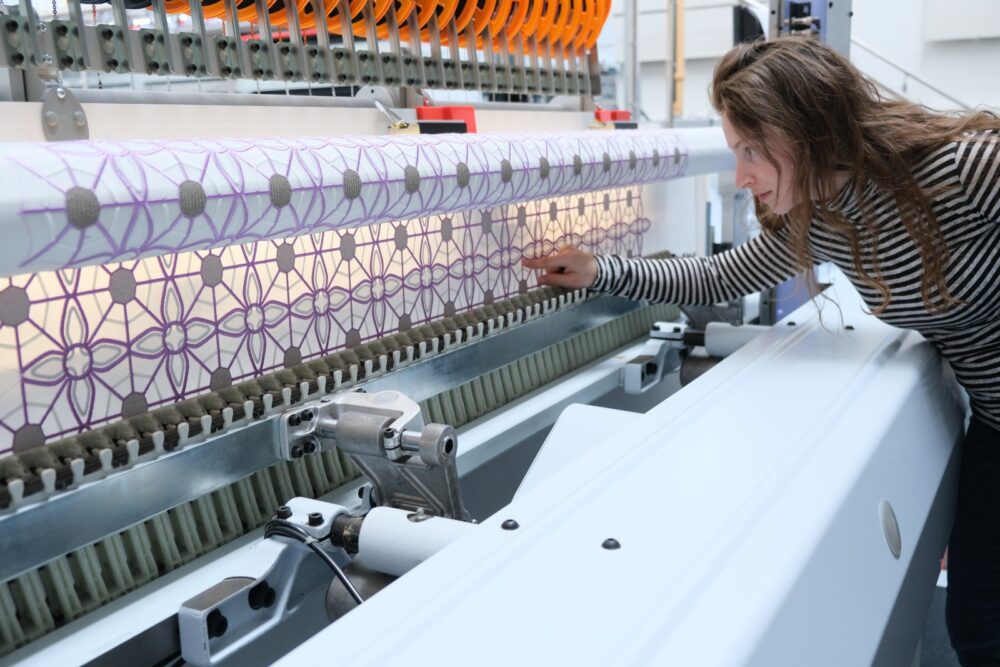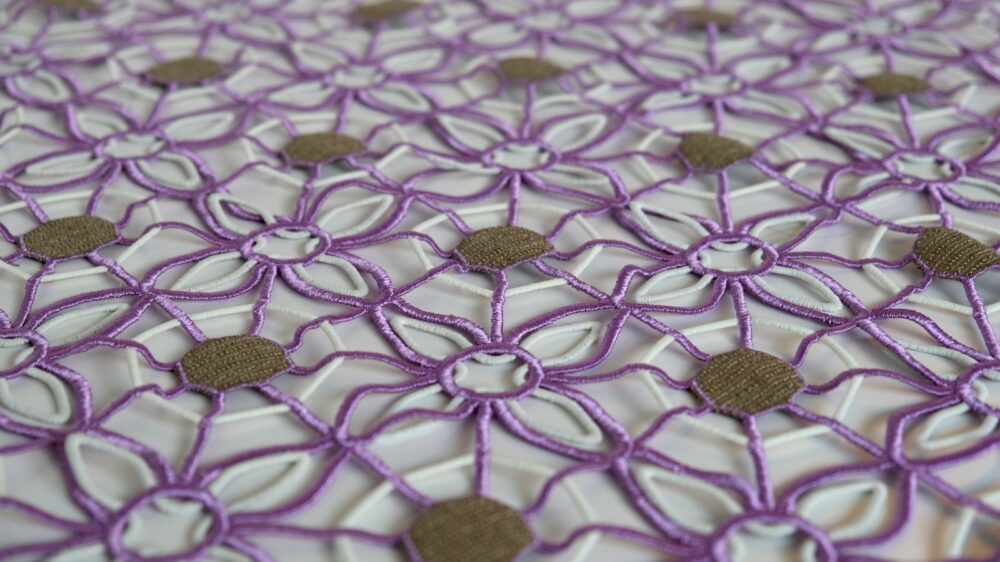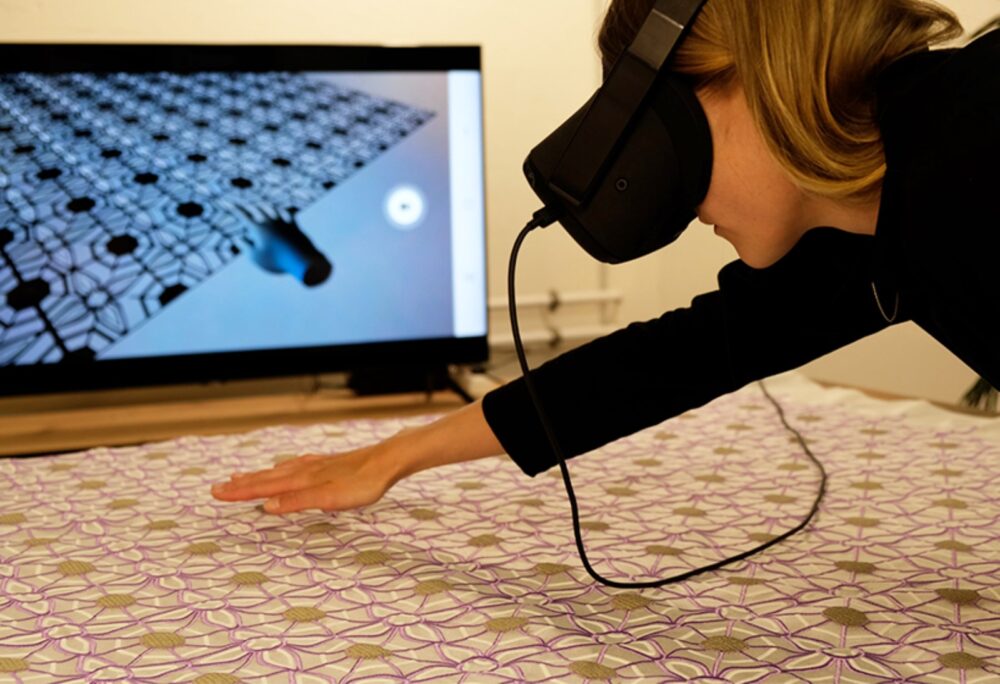An Israeli designer sees form as function, specifically clothing that doubles as electronics.
“If clothing has multiple functions, the value of each garment will be higher and the production can be shifted from mass manufacturing to customized production. This could lead to consumers buying more meaningful items,” says sustainable fashion designer Ganit Goldstein.
Goldstein says garments could have multifaceted uses.
A conductive garment could react with sensors that count people entering large venues. It could react to lighting conditions. It could charge your phone. It even has musical applications.
“I made the fabric interactive with music, so when I touch specific places on the garment, it produces the notes of the song,” she said.
Motivated to fill the gap between art, science and industry, she created functional textiles for her master’s degree project at the Royal College of Art in London.
In collaboration with Swiss textile company Saurer, which invented large-scale embroidery machinery, Goldstein developed a process for embedding electronics within the digital embroidery design.

Flower power
The result is a flower-patterned textile with an internal system of electronics.
Using existing conductive and glow-in-the-dark yarns, Goldstein and the Saurer team developed a process of layering the electronics directly into the fabric.
“The process of integrating electronics inside the embroidery machines has never been done on a large scale before, with more than 300 areas within the fabric that could have different functions. The piece is almost 2 meters square (21 square feet), with systems working both in the digital and physical spaces,” she said.
Integrating electronics into garments already exists — such as the Jacquard by Google tag tucked into a Levi’s Trucker jacket, Adidas GMR shoes or the Samsonite Konnect-i backpack, which enables the wearer to answer calls, play music, take photos and more, using gestures such as swipes and taps.

Goldstein’s twist: She hopes to take functional clothing to a new level — weaving the electronic and VR capabilities directly into the fabric.
Fabric with VR
Extending her vision to the digital space, Goldstein also developed a virtual reality (VR) interaction with the fabric.
“I used an Oculus Quest VR headset to make the digital fabric react to the movement of my hands. As my hand gets closer to the digital textile, the fabric detects this movement, and the flower shapes move up and down and change colors,” she says. “This brings VR out of gaming and into garments.
The Bezalel Academy of Art and Design graduate is excited about the potential for textiles that communicate movement, color and sound through hand gestures and a light system.
She will explore interactive textiles this fall with the Massachusetts Institute of Technology’s computational group in architecture and MIT’s Tangible Media Group.

“I’ve been exposed to the amount of damage to the environment caused by fast fashion and the poor conditions of garment workers producing items that are usually worn a few times and then thrown away to landfills,” Goldstein said.
“By adding new dimensions to the garments, virtually and physically, the value of each garment will be much higher and therefore, reduce waste in the fashion market.”
Goldstein also created 3D-printed shoes and outfits and a pandemic-friendly VR exhibition of her creations.
The post New Textiles Can Embed Electronics, Offer Important Scientific, Industrial Uses appeared first on Zenger News.

